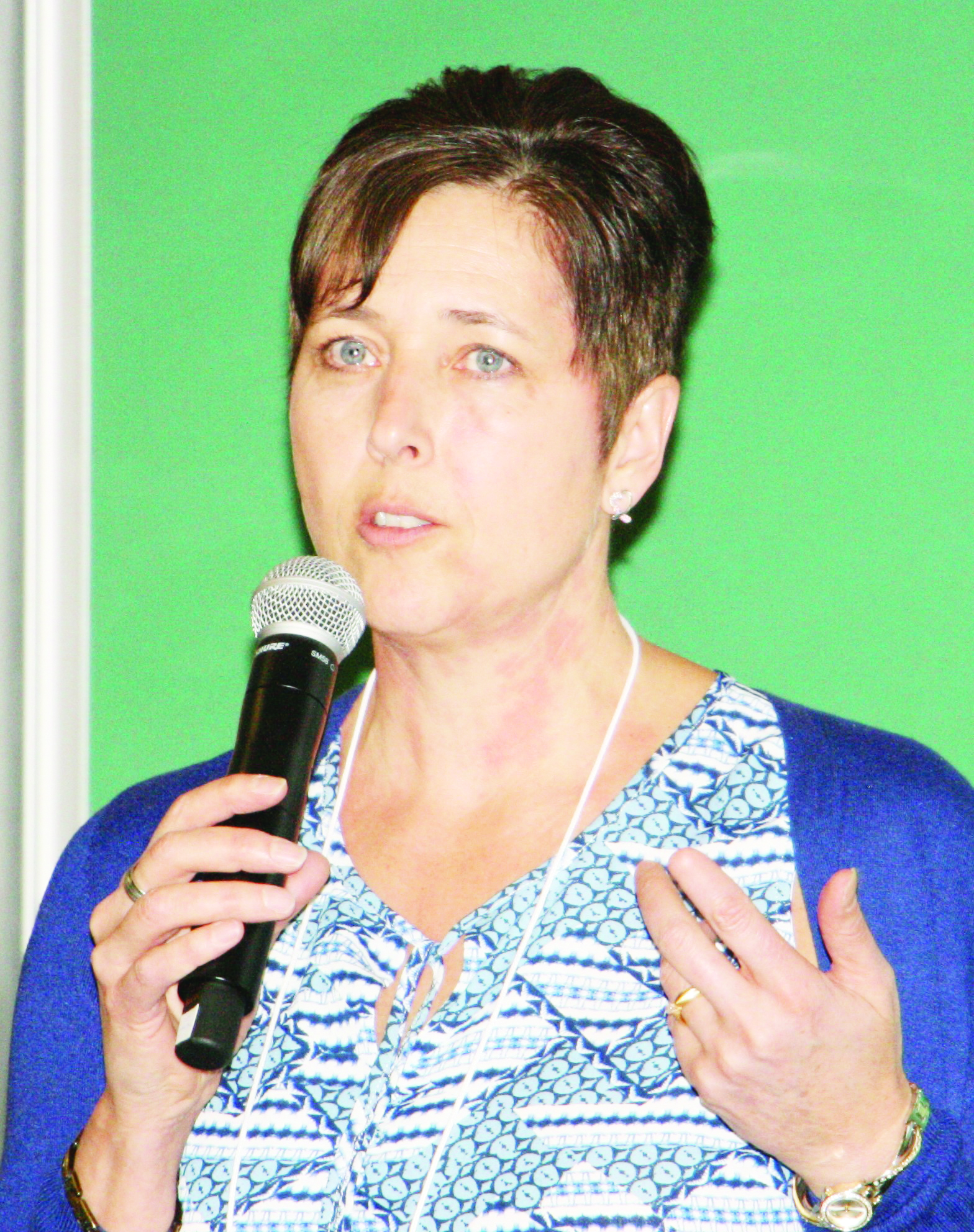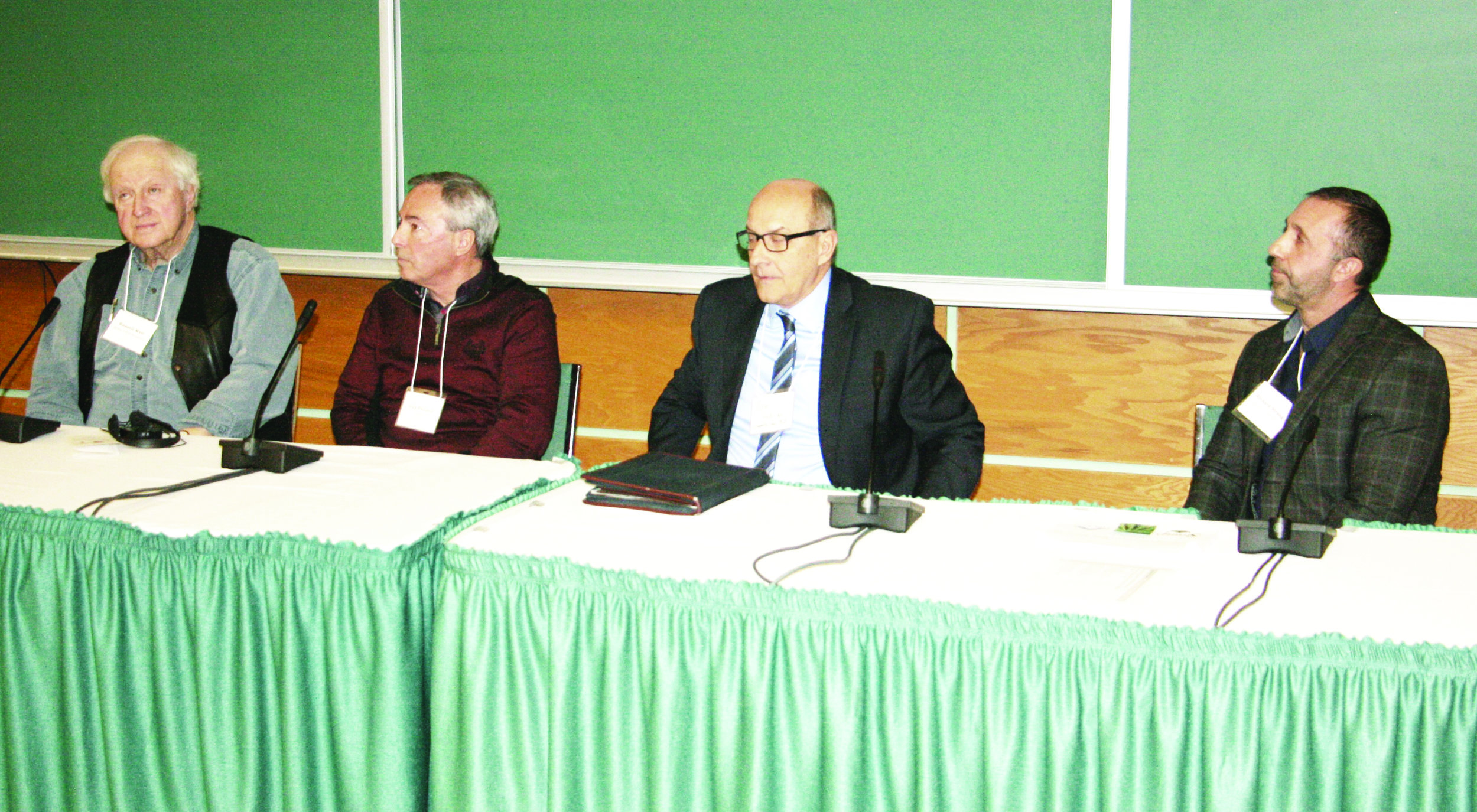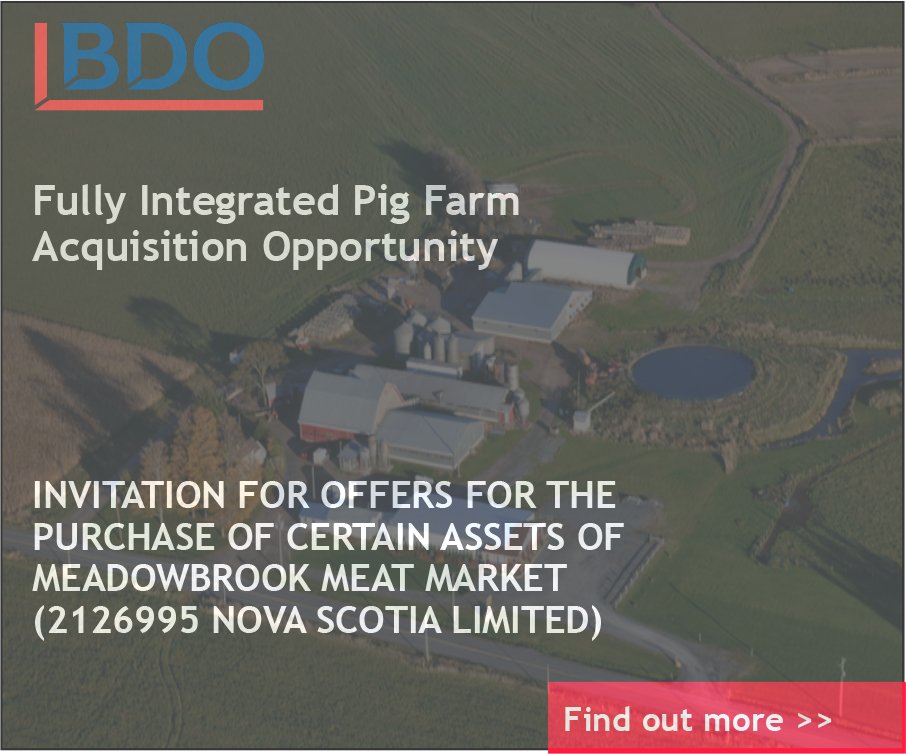N.B. conference explores adding value to farm products
/by George Fullerton
Around 100 registrants from across New Brunswick attended a conference titled Exploring Value-Added Opportunities for Farms and Entrepreneurs held at the Hugh John Flemming Forestry Centre in Fredericton on Dec. 4. The New Brunswick Department of Agriculture, Aquaculture, and Fisheries sponsored the conference.
Several presenters took time to define “value added,” which in the context of agriculture refers to increasing the value of a primary product through processing, manufacturing, or special marketing efforts.
Nicole Williams, a business growth officer with the department, welcomed everyone and introduced Marc King, the provincial director of business growth. In his address, King said the provincial government is committed to looking at and supporting projects that will add value to agriculture products.
The conference received an unannounced visit from Ross Wetmore, minister of the Department of Agriculture, Aquaculture, and Fisheries. Wetmore welcomed attendees, wished them a productive day, and voiced his support for value-added initiatives. “Value add is where it’s at,” he said.
Kevin McCully, the provincial director of agriculture, provided an overview of New Brunswick agriculture. McCully pointed out that while the number of farms in the province is down, the average size of farms has increased during the past number of years. He said there’s lots of opportunity for value added in agriculture, thus expanding farm receipts without increasing acreage.
McCully said New Brunswick’s current agriculture priorities are blueberries, hemp, apples, grapes, bees, and beef. He said the province has the advantages of geography and climate to expand production of these crops, and that the government can provide incentives to assist producers.
Steve Milbury, the senior director of priority opportunities with Opportunities New Brunswick, focused on the province’s potential to develop technological expertise. He said producers have the potential to provide markets with both value-added products and technology related to those products, and that Opportunities New Brunswick can offer incentives to support value-added projects.
ENTREPRENEURIAL PANEL
The conference then shifted gears, welcoming a panel of entrepreneurs who had established agricultural value-added businesses.
Guy Paillard, director of Coopérative Forestière du Nord-Ouest, described how their ExlPure brand was established to add value to maple syrup, blueberries, and haskap berries. The co-op has members from across northern New Brunswick and Maine, including some 15 maple producers and 15 haskap producers. The maple producers represent about 250,000 taps and the haskap growers represent approximately 100 acres in production. Blueberries are supplied by a grower co-op in the Acadian Peninsula. Value-added products include granulated maple sugar, maple syrup, haskap juice drink, wild blueberry and haskap juice, and haskap syrup.
“For marketing, we look at the entire world” said Paillard. In addition to distribution throughout New Brunswick, they are supplying markets in Quebec, Ontario, the U.S., and as far away as China. “We are very new, but we look toward all marketing opportunities.”
Russell Weir became the owner and manager of McKay’s Blueberries in 1988. Located in Pennfield, N.B., they grow about 1,400 acres of blueberries. In addition to selling fresh berries, the operation also sells frozen berries and operates a farm stand that also offers pies, sundaes, crumble, muffins, and other blueberry-based foods.
“Our first value-add step is to clean debris out of the berries,” said Weir. “Then we added freezing because customers were looking for (frozen berries). My advice to anyone thinking seriously about value-adding to a primary product that they produce is just go ahead and get started.”
Weir said the blueberry pie sideline at their farm stand grew from a few pies to 200 to 300 pies per day in the busy summer season.
“Then we had some customers who were looking for frozen pies they could take home and bake themselves,” he said. “And then we began to add different fruits to the blueberries and offered a variety of pie products. Then we added muffins, jam, jelly, and expanded to juice and then added wine.”
Weir said the value-added side of their business has grown to the point that it is subsidizing the commercial crop. Reflecting on the depressed prices for wild blueberries, Weir said if his operation hadn’t developed the value-added side, they may have been put out of business.
Dean Cummings of the Speerville Flour Mill described how that business was founded on buying and milling locally grown organic grains. The mill near Woodstock now offers nearly 150 individual products.
BLUE ROOF IS RED HOT
Richard Strang described how Blue Roof Distillers became established and brought their vodka to market. Strang reviewed the farm’s history from his fifth-generation perspective. The Strangs operate a 700-acre farm near Port Elgin, with about 300 acres in potatoes, which supply the table market.
Strang said he searched throughout his career for a product made from potatoes that didn’t make the table grade. He described several ideas he toyed with, including trying to make vodka in the kitchen sink.
He said that Blue Roof Distillers got off the ground when his son Devon, who was in a commerce program at Mount Allison University, required a theme for a business project. Strang described it as a dream come true, and Devon ran with the vodka distillery idea, researched recipes and production equipment, and eventually drafted a business plan.
Devon won a lot of interest from his business professors, and the farm began distilling spirits in 2016. In 2018, the Blue Roof brand won both a provincial innovation award and a double gold award at the SIP Awards, an international spirits competition based in California. Strang said the SIP award generated a bunch of calls from international spirit producers asking what the Blue Roof secret was, because the international producers had entered the competition for years but never won any awards.
Blue Roof vodka is available in liquor stores in New Brunswick and P.E.I., and Blue Roof Distillers has started testing a line of vodka coolers using natural fruit flavours.
Tammy Wall, operations manager with Canada’s Smartest Kitchen (CSK) at Holland College in Charlottetown, reviewed the services CSK provides to help bring new food products to market, from developing recipes to designing marketing campaigns.
Meaghan Seagrave, executive director of BioNB, an organization that supports biotech startups in New Brunwick, reviewed a long list of resources for those looking to scale up value-added enterprises, including academia, research institutions, and funding agencies.
Jan Tarr, a regional program officer with the Canadian Food Inspection Agency, outlined new government regulations coming into effect this year, including new rules around licensing, food safety, labelling, and traceability.
The highlight of the day was lunch served in the Maritime College of Forest Technology cafeteria, which was very different from typical cafeteria fare. Organizers and kitchen staff sourced and prepared fresh local vegetables, baked ham, and a choice of apple or blueberry crumble. Arguably, the best cafeteria meal ever!
The afternoon got underway with a food safety and traceability case study with Beth Fowler and Clay Bartlett, owners of Big Sky Ventures in Chipman, N.B. They have been growing Sea buckthorn berries and have built a line of value-added products from packaged fresh berries to jams, jellies, juice, wine, and cosmetics.
The pair described how they developed their operation and outlined steps to develop and market products. They detailed their production processes, equipment, and labelling.
The conference concluded with a panel outlining a number of financial support programs. The panel included Nicole Williams, Melanie Clark of Opportunities New Brunswick, Darren Graham of the Atlantic Canada Opportunities Agency, and Dino Kubik of the federal agriculture department.












